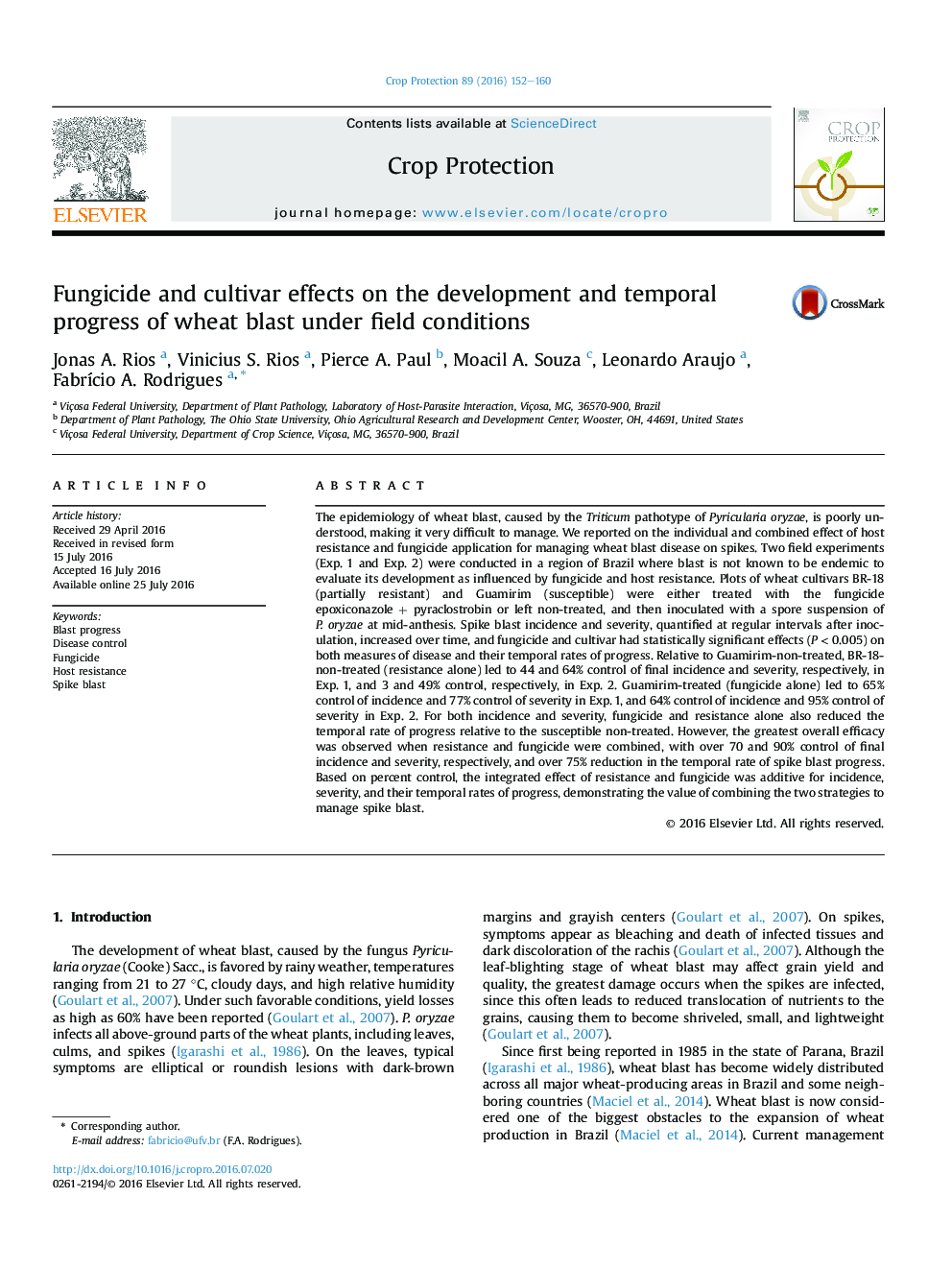| کد مقاله | کد نشریه | سال انتشار | مقاله انگلیسی | نسخه تمام متن |
|---|---|---|---|---|
| 6373168 | 1624298 | 2016 | 9 صفحه PDF | دانلود رایگان |
- Fungicide spray and resistant cultivar reduced spike blast intensity.
- Increase on blast intensity over time was due to blast dissemination within spikes.
- Yield increased with fungicide spray and using a resistant cultivar.
The epidemiology of wheat blast, caused by the Triticum pathotype of Pyricularia oryzae, is poorly understood, making it very difficult to manage. We reported on the individual and combined effect of host resistance and fungicide application for managing wheat blast disease on spikes. Two field experiments (Exp. 1 and Exp. 2) were conducted in a region of Brazil where blast is not known to be endemic to evaluate its development as influenced by fungicide and host resistance. Plots of wheat cultivars BR-18 (partially resistant) and Guamirim (susceptible) were either treated with the fungicide epoxiconazole + pyraclostrobin or left non-treated, and then inoculated with a spore suspension of P. oryzae at mid-anthesis. Spike blast incidence and severity, quantified at regular intervals after inoculation, increased over time, and fungicide and cultivar had statistically significant effects (P < 0.005) on both measures of disease and their temporal rates of progress. Relative to Guamirim-non-treated, BR-18-non-treated (resistance alone) led to 44 and 64% control of final incidence and severity, respectively, in Exp. 1, and 3 and 49% control, respectively, in Exp. 2. Guamirim-treated (fungicide alone) led to 65% control of incidence and 77% control of severity in Exp. 1, and 64% control of incidence and 95% control of severity in Exp. 2. For both incidence and severity, fungicide and resistance alone also reduced the temporal rate of progress relative to the susceptible non-treated. However, the greatest overall efficacy was observed when resistance and fungicide were combined, with over 70 and 90% control of final incidence and severity, respectively, and over 75% reduction in the temporal rate of spike blast progress. Based on percent control, the integrated effect of resistance and fungicide was additive for incidence, severity, and their temporal rates of progress, demonstrating the value of combining the two strategies to manage spike blast.
Journal: Crop Protection - Volume 89, November 2016, Pages 152-160
